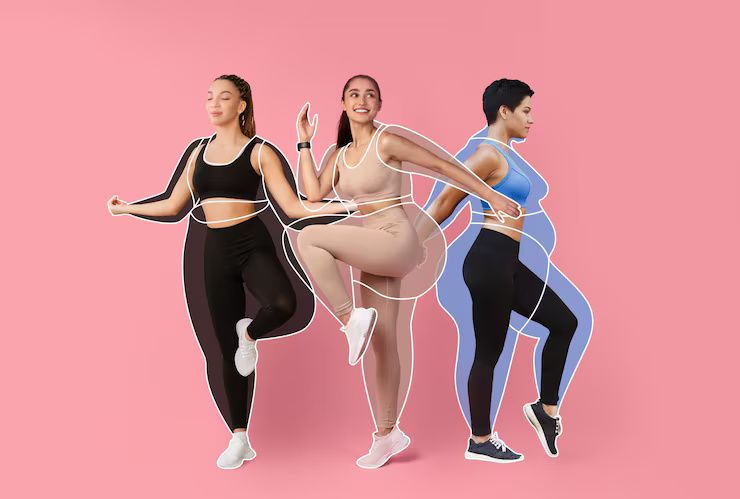Fitness trends reflect the changing ways people approach health, exercise, and overall wellness. They often emerge from technological advancements, evolving health data, or cultural shifts in how we view physical and mental fitness.
While traditional gym routines still hold value, modern fitness trends now include everything from virtual training platforms to AI-based fitness coaching, mental wellness integration, and social movement challenges. These changes address new lifestyle demands such as remote work, mental health awareness, and wearable tech innovations.

Importance – Why fitness trends matter today
The global conversation around health has evolved significantly. Here's why fitness trends are increasingly important:
-
Adapting to Modern Lifestyles: With hybrid work and busy schedules, flexible fitness solutions like mobile apps and short home workouts are in demand.
-
Mental Health Integration: Fitness is no longer just about appearance — it now includes sleep quality, stress management, and mindfulness.
-
Preventive Health Focus: Many people are using fitness to reduce chronic disease risk, especially after COVID-19.
-
Inclusivity and Accessibility: New trends support all age groups, body types, and abilities, making health achievable for everyone.
These shifts help people make better, more informed decisions about their health goals without needing a one-size-fits-all approach.
Recent Updates – Fitness trends that shaped 2024 and are expanding in 2025
Some of the top fitness trends gaining momentum in 2025 include:
| Fitness Trend | Description |
|---|---|
| Virtual & AI Fitness Coaches | Platforms like Freeletics, Fitbod, and Apple Fitness+ use algorithms to build smart, adaptive workout plans. |
| Hybrid Fitness (Online + In-Person) | Combines digital workouts with in-person classes or personal trainers for convenience and accountability. |
| Wearable Tech Integration | Smartwatches, Oura rings, and WHOOP bands now track heart rate variability, sleep, and calories in real time. |
| Recovery & Mobility Training | Foam rolling, stretching, and mobility workouts are now prioritized to reduce injury and improve performance. |
| Mental Fitness Apps | Tools like Calm, Headspace, and Insight Timer are integrated into fitness platforms to reduce burnout and improve sleep. |
| Mini Workouts / Micro Sessions | Short, 7- to 15-minute workouts designed for busy schedules are trending globally. |
Laws or Policies – How fitness is regulated and supported
Fitness services and tech fall under varying regulations depending on the country:
United States
-
FDA oversees some wearable fitness trackers if they collect biometric data.
-
HIPAA laws may apply to fitness apps that collect health info.
-
FTC regulates fitness marketing claims to ensure consumer safety.
India
-
AYUSH Ministry supports yoga and wellness but commercial fitness centers must follow local municipal health and safety rules.
-
Consumer Protection Act 2019 may apply to deceptive claims in fitness programs.
Europe
-
EU’s GDPR laws protect user data in wearable and fitness apps.
-
Personal trainers often require licensing and certification in many EU countries.
These policies are designed to protect users from misleading claims, unsafe environments, or unauthorized data collection.
Tools and Resources – Helpful platforms and apps in 2025
Here are useful apps, platforms, and resources that support the modern fitness lifestyle:
Fitness Apps
-
Nike Training Club – Free and premium workouts across strength, mobility, and endurance
-
FitOn – Instructor-led training with celebrity coaches
-
MyFitnessPal – Tracks nutrition and calorie intake
-
Strava – Ideal for runners and cyclists with GPS tracking
-
Peloton – On-demand and live classes for spin, yoga, and strength
Mental Fitness & Recovery
-
Headspace – Guided meditation and stress management
-
Sleep Cycle – Smart alarm and sleep tracking
-
Glo – Combines yoga, pilates, and meditation
Fitness Tech
-
Apple Watch Series 9 – Advanced metrics like VO2 max and cardio recovery
-
Oura Ring Gen 3 – Tracks sleep, heart rate, and activity recovery
-
WHOOP Band – Focused on athletes with strain and recovery insights
Websites & Tools
-
ACEfitness.org – Exercise database and trainer certification directory
-
Examine.com – Evidence-based supplement and fitness research
-
CDC.gov/physicalactivity – Official guidelines on physical activity
FAQs – Common questions about fitness trends
Q1. Are fitness trends only for young people?
No, modern fitness trends include programs for seniors, beginners, and people with limited mobility. Apps like SilverSneakers are designed for older adults.
Q2. Do you need equipment to follow current trends?
Not necessarily. Many trending workouts, like bodyweight HIIT, yoga, or walking challenges, require little to no equipment.
Q3. Are wearable fitness devices safe and accurate?
Most mainstream devices are safe and offer reasonably accurate tracking. However, they should not replace professional medical evaluations.
Q4. How do I choose the right trend or workout for me?
Start with your goals: weight loss, stress reduction, strength, or general health. Use free trials on apps, talk to trainers, or use online quizzes to find the best fit.
Q5. Is it okay to mix different fitness trends?
Yes. In fact, cross-training is encouraged. You can combine strength, cardio, mobility, and mental wellness practices to form a well-rounded routine.
Final thoughts
Fitness trends are not just fleeting fads. Many reflect broader shifts in how society views wellness — balancing physical strength with mental clarity, personalization, and accessibility. Whether you're new to exercise or looking to optimize your current routine, staying aware of these trends helps you make smart, sustainable health choices.
Instead of chasing every new fad, focus on trends that align with your lifestyle, budget, and goals. With the right tools and awareness, 2025 can be your most informed fitness year yet.